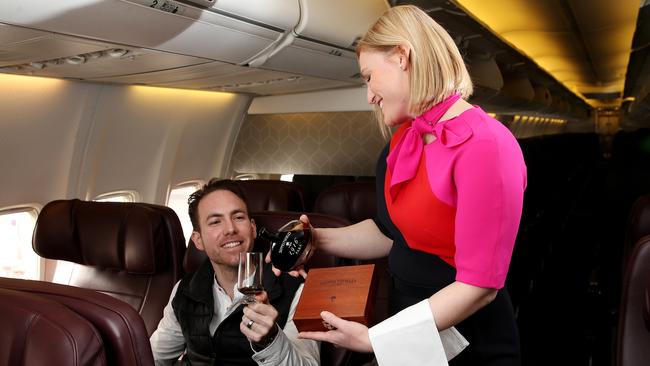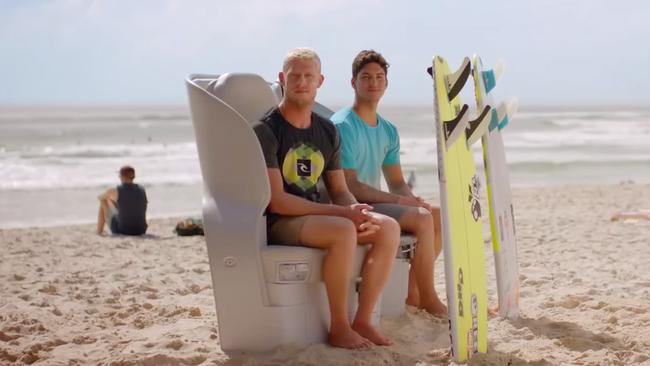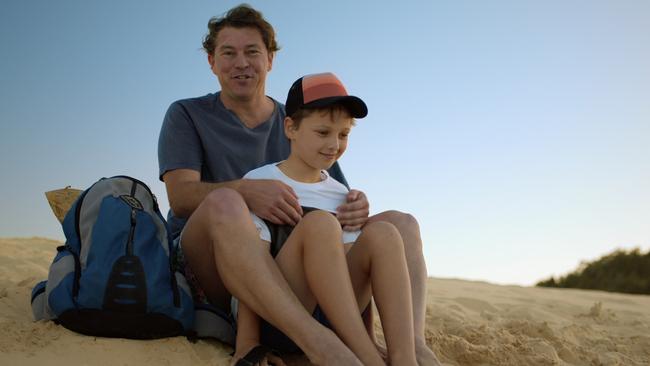Flight attendants fear safety message being watered down
The shift to fun, scenic in-flight safety videos undermines their basic message, say flight attendants.

Entertainment-focused in-flight safety videos have been blamed for underplaying the importance of safety on airlines and giving rise to incidents like the one involving American rapper will.i.am.
Police were called to meet his Qantas flight from Brisbane to Sydney on Saturday after he initially failed to respond to directions from a cabin crew member to stow his laptop for landing.

He blamed his noise-cancelling headphones and no charges were laid, but the Black Eyed Peas star took offence at his treatment.
In a series of tweets, will.i.am identified the flight attendant by name, posted a picture from her Facebook page and called her racist, triggering a wave of cyber abuse towards her.
Qantas requested he retract those comments and offered to provide legal support for the flight attendant, who is required by law and her employer to ensure that passengers abide by safety directions on aircraft.
READ MORE: Byron Bailey says cabin crew do not deserve to be abused simply for doing their job | Virgin, Qantas still waiting for takeoff as economy thwarts growth | Double dose of new Airbus aircraft on show in Australia | Runway drama sees passengers catch the bus
Flight Attendants Association of Australia secretary Teri O’Toole said a recent survey of members found abuse from passengers was now commonplace.
Of more than 900 cabin crew surveyed, 95.7 per cent said they had been verbally abused by passengers and 97.5 per cent said it was happening more often.
The trigger was generally a simple instruction, such as “it’s time to stow your laptop for landing”, “remove charger cords” or “return your seat to the upright position”.
“Every direction given is given for a good safety reason,” Ms O’Toole said. “It’s not because we like the sound of our own voices. Who on Earth wants to say 4000 times a day ‘please switch your phone to flight mode’?”
She believed the increase in abuse was connected to the shift towards “entertainment-style in-flight safety videos” which focused on tourism or humour rather than the reasons behind the safety messages.

“Passengers have become complacent about safety issues because they don’t fully understand why a safety direction is given,” Ms O’Toole said.
“At the moment I think our safety videos are a travel blog. You have people doing the safety demonstration on a yoga ball. It’s watered down the reason those safety requirements are there.”
Ms O’Toole “guessed that was why people were so non-compliant with things like putting their bags away, putting their seats upright and opening the window shade”. “These are all done for safety reasons,” she said.
Window shades were raised so cabin crew had a clear view of the exterior during landings and takeoffs because they could not open aircraft doors if there was fire.
Seats needed to be upright for landing so they would be rigid in the event of things going wrong and charger cords had to be removed because they were a potential hazard during an emergency exit.

“Everything has a purpose, and in addition cabin crew are audited by the Civil Aviation Safety Authority to ensure we are adhering to their strict safety standards,” Ms O’Toole said.
Japan Airlines was singled out as one of the few carriers that explained why safety directions had to be followed, in an animated in-flight safety video.
“It shows that if you stop to get your bags out in an emergency, people are backed up behind you,” Ms O’Toole said. “It gives some context to the requirement and why we have those requirements.”
In-flight safety videos have almost become a source of competition among airlines in the past decade, with carriers trying to produce the most entertaining presentation.
All must be signed off by regulators before being shown on aircraft, but that has not stopped a wide variety gaining approval.
A Qantas spokesman said their videos’ primary purpose was to communicate an important safety message.
“We know from our previous efforts that beautiful locations with a touch of humour is a great way to get people’s attention each time they fly,” the Qantas spokesman said.




To join the conversation, please log in. Don't have an account? Register
Join the conversation, you are commenting as Logout